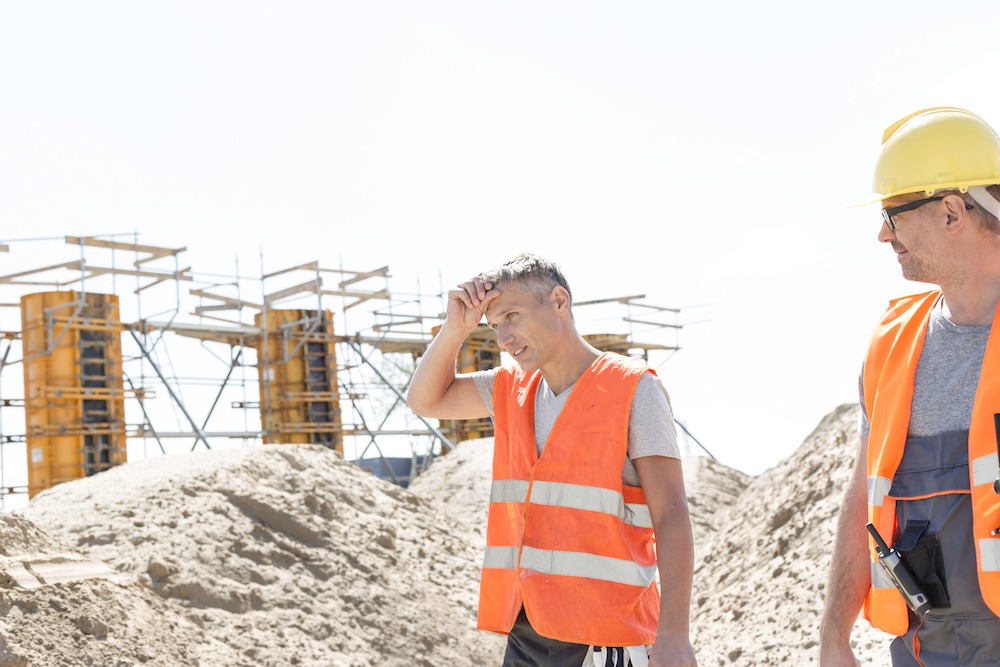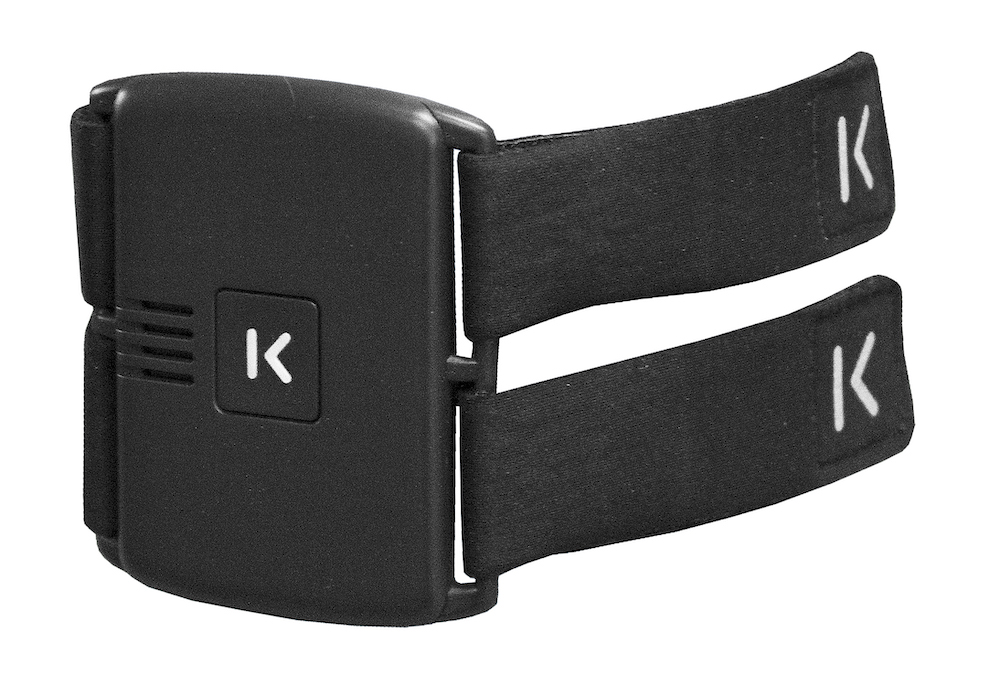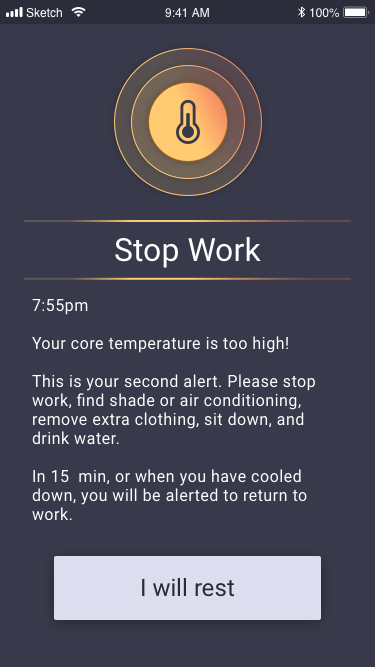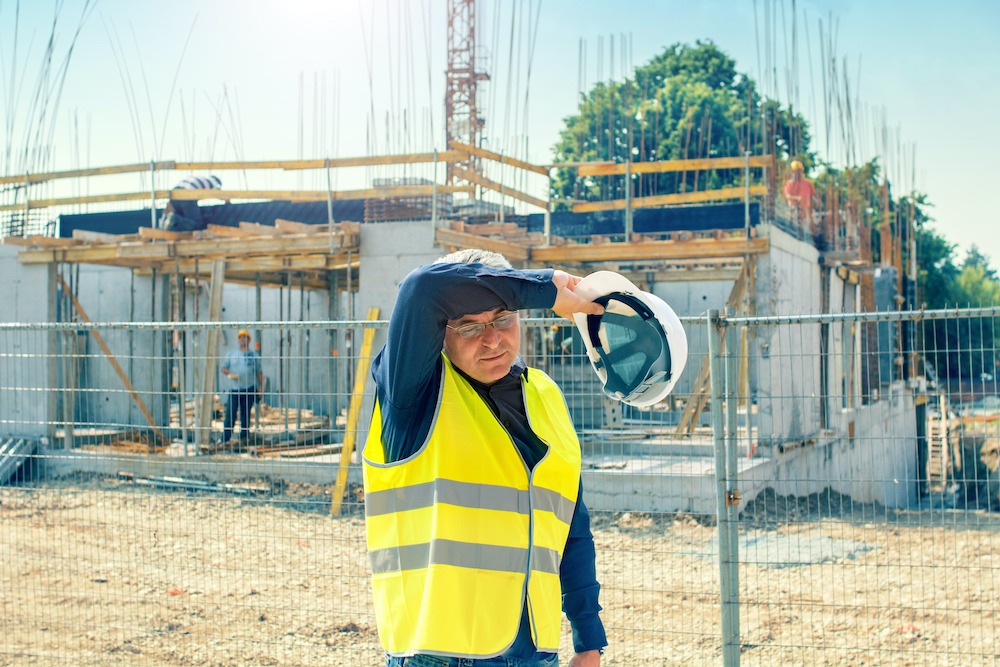Words: Cassandra Stern
Photos: Kenzen, IPGGutenbergUKLtd, bluecinema
In our last issue we discussed the ways the body works to process heat, the types of illnesses that can result from overheating, and the best ways to gauge outdoor heat conditions in our recent article, “Mitigating the Hazards of Working in the Heat,” but today, we are going to take a deeper dive into what it takes to stay safe in the heat. As any mason knows, the heat is definitely the enemy every summer, and often into fall, especially in the Southern states.
Masonry can require a lot of bending, lifting heavy objects, and working in direct sunlight when the shade is unavailable, all of which is hard work that produces a lot of heat. Despite educational efforts and resources dedicated to preventing heat-related illnesses on jobsites, thousands of masons fall victim to heat stress, exhaustion, or stroke every year, and some cases are fatal.
According to the OSHA website, a majority (50%-70%) of outdoor heat-related fatalities occur within the first few days of working in warm or hot environments because the body needs to acclimate or build a tolerance to the heat gradually over time. Otherwise, a high heat index is a major risk factor for heat exhaustion or worse in non-acclimated individuals. Heat-related illnesses can creep up on a worker quickly and without warning, and are an ever-present threat in outdoor or even certain indoor conditions in the year’s warmest months, but there are several strategies and options that work particularly well for masons when it comes to beating the heat.
Old School Methods
Some of the most effective methods for masons to protect themselves from heat stress on the jobsite are also the simplest, just ask Zach Everett. An experienced Corporate Safety Director at Brazos Masonry, Everett has years of experience dealing with supervising and keeping workers safe from a variety of hazards on the jobsite, and especially from the heat. One of the first things to keep in mind is that removing clothing when temperatures climb may not be a temperature lower measure even though you may feel a little more comfortable.
“Some people like to take off a lot of clothes in the heat, that might be a misconception and can actually make things worse because you have direct sunlight on your skin,” he cautions, “if you start actually getting sunburned that will actually start raising your body temperature as well.” To protect yourself, he recommends wearing light-colored cotton clothing to wick away sweat and to help cool you off a bit. Cooling towels, which can be soaked in cold water for longer-lasting relief, are also a recommended option.
While workwear is the first thought, there are other more out-of-the-box methods for working around, rather than against the heat. As any mason contractor will tell you, productivity drops a little bit during the hotter months. The increased heat requires heightened precautions like more frequent breaks in the shade and better access to water, but these measures can be extended even further. For example, Everett takes the extra step of encouraging his crew to take a slower and easier pace during safety meetings to avoid overexertion and heat exhaustion. While this action could potentially lead to some delays in the overall completion of the project, it might also save lives.

However, for projects on a tight schedule, Everett has a more creative suggestion: working at night. A night shift can make things 10-15 degrees cooler for workers, which is a bonus but comes with the obvious drawback of poor visibility. To combat this, “you have a lot of light towers hitting your work from a lot of different angles so you don’t have a lot of shadows,” which has the added benefit of keeping workers safe in the dark as well.
A final suggestion for mason contractors is to work with the surrounding environment to protect workers. By starting on the west side of the building when the sun is rising in the east, and then moving to the east side of the building during the afternoon when the sun is setting in the west. By doing this, workers remain on the shady side of the building throughout the day, though this is only possible when in permissible locations. Another situationally based solution is to introduce sun shades when working on scaffolding which blocks the sunshine from masons’ backs and further reduces heat and sun exposure.
New School Methods
While the above are simple solutions that can easily and simply be implemented, they all lack one crucial element to keeping workers safe: monitoring. While self-monitoring and the awareness of your peer’s physical condition are important, they are not foolproof methods for keeping masons safe in high heat index conditions. When working in the outdoors, keeping watch for excessive sweating or facial redness, a sudden lack of sweat, headaches, nausea, or dizziness should always be a priority.
It is easy to get consumed in the job in front of you, and not realize there is a problem until heat stress has already set in. However, the recently released Kenzen Patch can keep an eye on working conditions that are now and is accessible for mason contractors everywhere.

As masonry technology moves into the 21st century with the development and introduction of equipment like exoskeletons and AR/VR training, it only makes sense that smart PPE is not far behind. By using smart technology like sensors integrated with cloud connectivity to deliver real-time safety information to both the wearer and jobsite safety supervisor simultaneously. Technology like the Kenzen Patch is able “to keep industrial workforces safe from heat, fatigue, and overexertion on the job through the delivery of real-time alerts,” stated Heidi Lehmann, Chief Commercial Officer at Kenzen. According to the Kenzen website, the Patch is a small, flexible device that helps you better understand your physiology. Worn during the work shift, receive personalized health insights and notifications to help you stay safe in the most strenuous scenarios.
The Patch is appropriately named as that is exactly what it is. When placed either on the arm or on the chest, the Patch was designed to be comfortable and worn the entire day. It feeds real-time health information directly to the wearer, the jobsite safety supervisor, and EHS corporate by sampling data like temperature and heart rate every five seconds, resulting in a whopping 1.3 million data points per worker per day. This information is used to keep track of current physical activity levels and allows workers to monitor their own heat responses instantly. This is especially useful as “physiologically” we are all different.

Additionally, the Patch is said to take each individual into consideration so it is personalized for them. “Even if everybody is in the same situation and doing the same type of work, one individual might overheat or be up towards heat injury where everyone else might not be,” explains Lehmann. The individualized data processing is said to allow the Patch to be intuitive and instantly alerts users when they are approaching heat exhaustion.
Some have concerns about the sharing of their personal health information, and this is often one of the first issues raised when users begin adopting the Patch system. This concern was not treated lightly by Kenzen, who designed the entire system with user privacy in mind. Lehmann states, “the worker is the only one that sees all of their health data in real-time, and retrospectively, the safety manager is only going to see if a worker is up for heat injury, has dismissed alerts and needs an intervention, so all they see is in the moment ‘do I need to intercede to keep this worker safe.’”
There is also a separate feed that goes to corporate management, but that information is completely used for risk analysis and management. With the ability to visualize sweeping data trends across jobsites, corporations can then make recommendations to shift work times or put additional heat safety protocols into place, like lighter PPE or additional equipment. With so much information available on both the individual and managerial levels, it is no surprise that smart PPE is quickly becoming the way of the future for masons working in high heat index conditions.
Whether you have embraced old school heat safety techniques or are interested in adopting more advanced technology to keep yourself and others safe on the jobsite, the fact remains that every year work conditions seem to be growing hotter and the heat must be addressed. From clothing, to shift times, to new smart PPE like the Patch, more and more options are available for masons to protect themselves from dangerous outdoor working conditions.
Ultimately, it is up to every individual on the jobsite to practice proper heat safety precautions, and the key to preventing heat stress injury starts with education. If you’re interested in how you can keep yourself and your employees safe in hot temperatures, be sure to stay updated on the best ways to do so at masonrymagazine.com.
